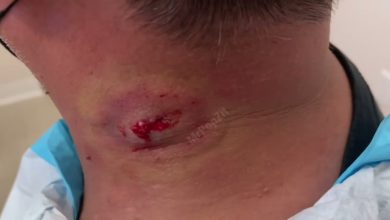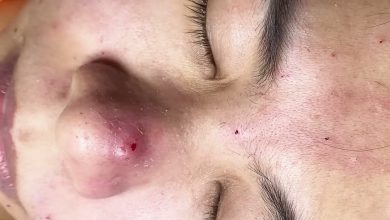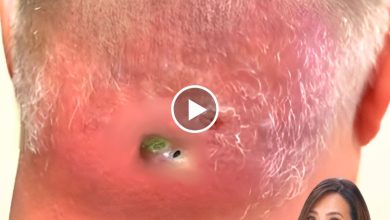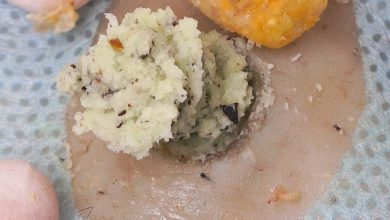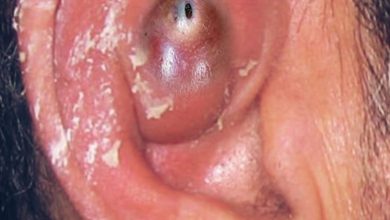Effective Drainage Techniques for an Infected Pilonidal Cyst: A Step-by-Step Guide
A pilonidal cyst is a painful, fluid-filled sac that forms at the base of the spine, near the tailbone. It often contains hair, debris, and skin cells, and it can become infected, leading to swelling, redness, and pus drainage. If you’re dealing with an infected pilonidal cyst, drainage may be required to help relieve the pain and clear the infection. This article will guide you through the process of safely draining an infected pilonidal cyst and offer tips for aftercare to prevent further complications.

What is a Pilonidal Cyst?
A pilonidal cyst is a small pocket or sac under the skin, usually located just above the crease of the buttocks. Though some people never experience issues with their cysts, others may develop infections, causing significant pain, swelling, and discomfort. Infected pilonidal cysts are often characterized by the presence of an abscess (a pocket of pus), which can lead to fever and severe pain.
Why Drainage Is Necessary
When a pilonidal cyst becomes infected, drainage is essential to remove the accumulated pus and promote healing. Without drainage, the infection can worsen, leading to an increased risk of abscess formation, further infection, or even chronic pilonidal disease. Proper drainage can also help relieve the pressure and pain caused by the infection.
Step-by-Step Guide to Draining a Pilonidal Cyst
1. Assess the Situation: Before attempting drainage, it’s crucial to determine the severity of the infection. If the cyst is small, not severely infected, and there’s minimal swelling, it may heal on its own with proper care. However, if the cyst is large, swollen, and painful, drainage may be needed. It’s best to consult a healthcare provider for an evaluation to determine whether drainage is necessary.
2. Prepare Your Tools: To safely drain the cyst, you’ll need sterile tools and supplies:
- Sterile gauze or cotton swabs
- Sterile needle or scalpel (for medical use only)
- Antiseptic solution (such as iodine or rubbing alcohol)
- Clean dressing or bandage
- Gloves
3. Clean the Area: Thoroughly clean the area around the cyst with antiseptic solution to reduce the risk of infection. Wearing gloves is highly recommended to prevent cross-contamination. Gently wipe the skin surrounding the cyst to remove any dirt or bacteria that could complicate the drainage process.
4. Make an Incision (If Necessary): If the pilonidal cyst has formed an abscess and is not spontaneously draining, a small incision may be required to allow the pus to escape. This should only be performed by a healthcare professional to ensure it is done properly and under sterile conditions. The incision should be small but deep enough to drain the entire contents of the cyst.
5. Drain the Cyst: Once an incision is made, gently apply pressure around the cyst to express the pus. Use sterile gauze or cotton swabs to catch the pus and debris as it exits the cyst. It’s important to continue applying gentle pressure to ensure all the infected material is removed.
6. Clean the Area Again: After the cyst has been fully drained, clean the wound with antiseptic solution to minimize the risk of further infection. Pat the area dry with a sterile gauze pad, and avoid rubbing or scrubbing, which can irritate the skin.
7. Apply a Dressing: Once the cyst is drained and the wound is cleaned, apply a sterile dressing or bandage to protect the area from dirt and bacteria. This will also help absorb any remaining pus and fluid that may continue to drain. Change the dressing daily or as needed to maintain cleanliness.
8. Monitor the Healing Process: After drainage, the cyst area should begin to heal within a few days. Keep an eye on the wound for signs of further infection, such as increased redness, swelling, or the formation of a new abscess. If any of these symptoms occur, it’s important to seek medical attention immediately.
Aftercare and Prevention Tips
1. Follow Proper Hygiene: Maintaining good hygiene is crucial to prevent further infections. Clean the area gently with mild soap and water, and always dry the skin completely to avoid moisture buildup, which can promote bacterial growth.
2. Use Warm Compresses: Applying warm compresses to the affected area can help soothe the skin and promote drainage. This can also help reduce swelling and discomfort.
3. Avoid Sitting for Extended Periods: Sitting for long periods of time can put pressure on the cyst and aggravate the infection. If possible, try to stand or walk around to relieve the pressure.
4. Wear Loose, Comfortable Clothing: Tight clothing can irritate the affected area and exacerbate the problem. Opt for loose-fitting, breathable clothing that allows air circulation around the cyst to promote healing.
5. Follow Up with Your Doctor: If the cyst continues to drain, or if you experience frequent pilonidal cyst infections, follow up with your doctor for further treatment. In some cases, surgery may be required to remove the cyst permanently and prevent recurrence.
Conclusion
Draining an infected pilonidal cyst can provide significant relief from pain and discomfort while helping to clear the infection. However, this procedure should be done carefully, preferably by a healthcare provider, to ensure proper drainage and minimize the risk of further complications. With proper care and aftercare, most individuals can recover from an infected pilonidal cyst and return to their normal activities. If the infection persists or if the cyst reoccurs, seeking professional treatment is essential for long-term relief.

